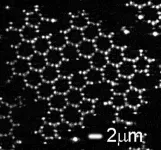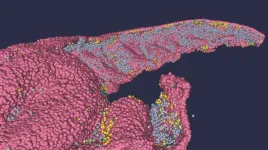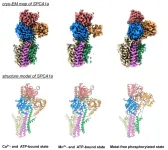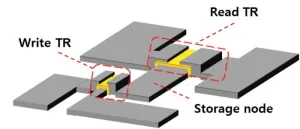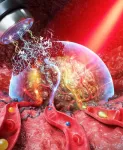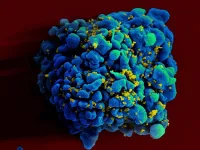(Press-News.org) A parasite which has devasting impacts on agriculture and human health is the first pathogen to have its proteins located and mapped within its cells – providing clues to their function and helping to identify potential drug targets.
African trypanosomes are parasites transmitted by tsetse flies that cause sleeping sickness in humans (presenting as fever, anaemia and, in serious cases, death) and a similar disease celled nagana in cattle. These parasites have made large areas of Africa unsuitable for livestock production, costing rural farmers up to ~3.7 billion pounds each year in lost revenue.
For the first time ever, scientists have developed a detailed “protein atlas” of a pathogen – a kind of biological map that locates proteins in cells. They conducted the research on Trypanosoma brucei (T. brucei), helping to understand where proteins are within its cells, providing functional insights that may ultimately help treat parasite infections.
The benefits of this ground-breaking research by the Universities of Warwick, Oxford and Oxford Brookes do not stop there. In mapping the proteins within T. brucei, scientists now understand more about its evolutionary cell biology. Like humans, T. brucei are eukaryotes – meaning their cells have a nucleus. However, T. brucei evolved in a very divergent way to human cells. Exploring protein mapping sheds light on how it evolved to be so different.
Samuel Dean, Assistant Professor of parasitology at the University of Warwick, said: “In this study, we genetically modified trypanosome parasites to make proteins attached to a green fluorescent dye. This helped to show exactly where its proteins are within the cell. Using this information, we are able to understand more about what these proteins might be doing. Up until now 50% of the proteins in T. brucei had unknown functions.
“This has significant impacts on our understanding of pathogen evolution and provides functional clues for thousands of otherwise uncharacterised proteins. This will help further investigations and may help to inform on new treatments for these terrible diseases.”
Professor Keith Matthews, expert in parasite biology at the University of Edinburgh, added: "This important resource will be of immense long-term value to researchers focused on these devastating pathogens, but also helps to understand the protein function and evolution of all nucleated cells, including our own.”
University of Ghana senior lecturer, Theresa Manful Gwira, who is Head of Research Training at the West African Centre for Cell Biology of Infectious Pathogens, added: “This is a very important work, and a powerful resource that will be useful to many researchers including African scientists that work on the devastating African trypanosomiasis, thus contributing to a better understanding of the parasite biology.”
This research was funded by The Wellcome Trust.
Access the resource here and read the full paper here.
END
Pathogen mapped for the first time – to understand evolution and potential treatments
2023-03-24
ELSE PRESS RELEASES FROM THIS DATE:
Graphene grows – and we can see it
2023-03-24
Graphene is the strongest of all materials. On top of that, it is exceptionally good at conducting heat and electrical currents, making it one of the most special and versatile materials we know. For all these reasons, the discovery of graphene was awarded the Nobel Prize in Physics in 2010. Yet, many properties of the material and its cousins are still poorly understood – for the simple reason that the atoms they are made up of are very difficult to observe. A team of researchers from the University of Amsterdam and New York University have now ...
Human Brain Project researchers develop new full-scale 3D structural model of the human hippocampus
2023-03-24
A new high resolution model of the CA1 region of the human hippocampus has been developed by the Institute of Biophysics of the Italian National Research Council (CNR-IBF) and University of Modena e Reggio Emilia (UNIMORE), part of the Human Brain Project. The single-cell resolution model, which replicates the structure and architecture of the area, along with the position and relative connectivity of the neurons, was developed from a full-scale dataset of high resolution images. The dataset is available in the BigBrain Atlas and it will be soon available on EBRAINS. According to the study, published in the journal ...
The first report on the incidence of moderate and severe OHSS in China
2023-03-24
Moderate and severe ovarian hyperstimulation syndrome (OHSS) developed in 1.14% of Chinese women of reproductive age between 2013 and 2017. Moreover, women under 35 years of age receiving assisted reproductive technology (ART) should be monitored for OHSS more closely compared with other age groups.
These findings were concluded from the first report on the incidence of moderate and severe OHSS in China recently published in Health Data Science, a Science Partner Journal.
OHSS constitutes the most severe iatrogenic ...
Cryo-electron microscopy captures structure of a protein pump
2023-03-24
Hailey-Hailey disease is a rare, inherited condition characterized by patches of blisters appearing mainly in the skin folds of the arm pits, groin and under the breasts. It is caused by a mutation in the gene that codes for a specific protein involved in the transportation of calcium and manganese ions from the cell cytoplasm and into a sac-like organelle called the Golgi apparatus. Scientists at Tohoku University, together with colleagues in Japan, have uncovered some aspects of this protein's structure that could help researchers understand how it works. The findings, published ...
AI “brain” created from core materials for OLED TVs
2023-03-24
ChatGPT's impact extends beyond the education sector and is causing significant changes in other areas. The AI language model is recognized for its ability to perform various tasks, including paper writing, translation, coding, and more, all through question-and-answer-based interactions. The AI system relies on deep learning, which requires extensive training to minimize errors, resulting in frequent data transfers between memory and processors. However, traditional digital computer systems' von Neumann architecture separates the storage and computation of information, resulting in increased ...
Contrast-enhancing agents to overcome physical and practical challenges of photoacoustic imaging
2023-03-24
A research team at POSTECH led by Professor Chulhong Kim (Department of Electrical Engineering, Department of Convergence IT Engineering, and Department of Mechanical Engineering) has compiled the findings from innovative research on contrast-enhanced photoacoustic imaging conducted over the last four years. These findings were recently featured in Chemical Reviews, a highly authoritative journal.
For decades, the scientific community has been investigating the potential of photoacoustic imaging as a biomedical imaging modality. However, despite its enhanced optical contrast and ultrasonic spatiotemporal resolution, photoacoustic imaging faces ...
A readily available dietary supplement may reverse organ damage caused by HIV and antiretroviral therapy
2023-03-24
FINDINGS
MitoQ, a mitochondrial antioxidant that is available to the public as a diet supplement, was found in a mouse study to reverse the detrimental effects that HIV and antiretroviral therapy (ART) have on mitochondria in the brain, heart, aorta, lungs, kidney and liver.
The researchers used a molecular method to measure the ratio of human and murine mitochondrial (mtDNA) to nuclear DNA (ntDNA) ratio, a measure of mitochondrial dysfunction. Reduction in this ratio reflects mitochondrial dysfunction. Compared to uninfected mice, HIV infected mice treated with ART had mitochondrial dysfunction in the human immune cells in the brain, ...
New research project aims to set standardized approach to lipoprotein(a) management
2023-03-24
DALLAS, March 24, 2023 — High levels of lipoprotein(a) [Lp(a)] are an independent, predominantly inherited and causal risk factor for cardiovascular disease, the leading cause of death and disability worldwide, according to a recent American Heart Association scientific statement. It is estimated that 1 in 5 Americans have high Lp(a) levels. Studies have shown that elevated Lp(a) — a low-density lipoprotein variant containing a protein called apolipoprotein(a) — is a risk factor for atherosclerosis (buildup of fatty material in artery walls) and related ...
Dr. Natalie Uy named chief of division of pediatric nephrology at Weill Cornell Medicine and NewYork-Presbyterian Komansky Children’s Hospital
2023-03-24
Dr. Natalie Uy, a leading pediatric nephrologist, has been named chief of the Division of Pediatric Nephrology in the Department of Pediatrics at Weill Cornell Medicine and NewYork-Presbyterian Komansky Children’s Hospital, effective April 17.
The Division of Pediatric Nephrology provides compassionate care for newborns, children and young adults with complex kidney diseases and urologic conditions. Services provided include dialysis and kidney transplantation for patients with end-stage kidney disease.
Dr. Uy was recruited to Weill Cornell Medicine as an assistant professor of pediatrics ...
Use age, not weight, to screen for diabetes
2023-03-24
· All racial/ethnic minority groups develop diabetes at lower weights than white adults
· Screening all adults aged 35 to 70 years identifies the greatest proportion of adults with prediabetes and diabetes
· A ‘huge portion’ of the U.S. population has undiagnosed prediabetes or diabetes
CHICAGO --- Focus on age, not weight, to capture the greatest number of people in all racial and ethnic groups with prediabetes and diabetes, reports a new Northwestern Medicine study.
Screening all adults ...
